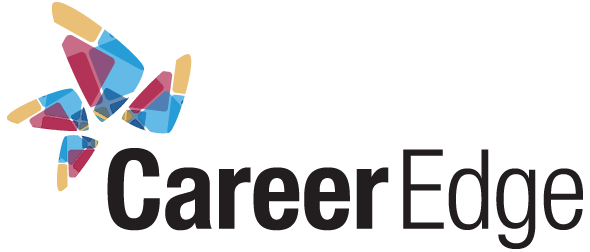
Finding high quality candidates can be a challenge for so many businesses. Talent acquisition has become complex and challenging in today’s competitive business landscape. Employers need to review hundreds of resumes, interviews, and assessments to find the perfect candidate to drive organizational success. Pursuing top-tier talent is challenging, making finding the right fit for the job even harder.
While resumes and qualifications are essential for evaluating candidates, they only tell part of the story. Employers must also consider other critical factors such as personality, work ethic, and growth potential. These factors can make all the difference between hiring an adequate candidate and finding the perfect fit for the team.
To help employers navigate this process effectively, we have created a comprehensive guide that makes talent acquisition much easier and streamlined. Our guide supports employers with the knowledge and strategies to identify and attract high-performing professionals who can help them achieve their organizational goals.
Why High-Quality Candidates Matter
Investing in high-quality candidates yields numerous benefits for organizations for obvious reasons such as:
- Increased Productivity: Top performers are significantly more productive, driving efficiency and profitability.
- Enhanced Morale: Quality candidates boost morale and engagement among their peers, fostering a positive work environment.
- Reduced Turnover: Hiring candidates committed to long-term success minimizes turnover and associated costs while maintaining organizational stability.
Challenges in Finding Quality Candidates
Despite the benefits, finding quality candidates poses several challenges, such as..
- Subjectivity: Defining quality is subjective and requires careful consideration of organizational needs.
- Variability Across Companies: What constitutes a high performer varies between organizations, complicating the hiring process.
- Traditional Hiring Methods: Traditional methods often fail to accurately assess candidate quality, leading to mis-hires and inefficiencies.
Some hiring managers also make mistakes when recruiting candidates, contributing to their inability to find quality candidates.
Common Mistakes in Hiring
Finding a high-quality candidate for a job can be tricky, and some common mistakes that employers make can make the process even more difficult.
- Focusing too much on finding the “perfect” candidate can cause employers to overlook candidates with a potential fit or candidates who would excel in the long run with the right support and development.
- Moving too slow or prioritizing speed over thoroughness in the hiring process can lead to poor hiring decisions that have costly repercussions. It’s important to take your time to thoroughly evaluate candidates and make informed decisions, but not too slow that you might lose good candidates in the process.
- Playing it safe by not being open to interviewing a new pool of candidates. Taking a risk and pushing outside of your comfort zone can be a huge opportunity for growth.
Spotting Signs of Promising Candidates
You don’t have to hire someone to know whether they are high quality or not. Effective candidate assessment requires a holistic approach that extends beyond surface-level qualifications.
To identify promising candidates, employers must look for subtle yet telling signs that indicate compatibility and potential for growth within the role. Let’s explore some actionable ways to highlight key traits in resumes and interviews:
Asking the right questions during a phone screening or interview can reveal a lot about a candidate’s suitability for the role.
Questions probing verbal communication skills, teamwork ability, and problem-solving capabilities offer valuable insights into how they might perform in their potential job role. Additionally, consider how candidates discuss past challenges and setbacks, noting their ability to bounce back and proactively seek solutions.
Signs for Quality Candidates
Defining what quality means for your organization is essential in the quest for quality candidates. Here are some key factors to consider:
- Relevant Hard Skills: Candidates must possess the fundamental skills required for the role.
- Culture Add: Look for candidates who not only fit into but also enhance your company culture. A good culture fit is essential for long-term success. Seek candidates who understand and embrace your company’s values, dress code, and team dynamics. This alignment fosters cohesion and synergy within the workplace.
- Teamwork and Collaboration: Assess candidates’ ability to work effectively with others and their leadership style, which will foster a positive team dynamic.
- Willingness to Learn: Seek candidates eager to expand their knowledge and skills, contributing to ongoing growth and development.
- Motivation: Look for candidates with enthusiasm and drive, driving engagement and productivity.
- Long-Term Commitment: Prioritize candidates committed to staying with the company for the long haul, minimizing turnover and maximizing retention.
- Resilience: Observing candidates’ emotional intelligence, coping mechanisms, and attitudes toward failure can also provide valuable insights into their resilience levels. Resilient individuals can navigate adversity with grace and perseverance, leveraging setbacks as opportunities for growth and development.
- Good Communication Skills: look for candidates who can articulate ideas clearly, listen actively, and provide thoughtful feedback. These skills are invaluable in driving collaboration and achieving common goals.
What are the Best Practices for Finding Quality Candidates?
Best practices for finding quality candidates involve a combination of strategic sourcing, effective screening, and engaging recruitment methods. By incorporating these best practices into your recruitment process, you can increase your chances of finding and hiring high-quality candidates who are the right fit for your organization’s needs and objectives. Here are some key practices:
Define Job Requirements Clearly
Start by identifying hiring needs. Conduct a skills gap analysis to define the qualities necessary for success in the role. Define the skills, qualifications, and attributes required for the position. This helps focus your search and ensures you’re targeting candidates who are the best fit for the role.
Optimize Job Descriptions
Craft compelling, detailed job descriptions that accurately reflect the role and requirements. Use language that resonates with potential candidates and highlights the company’s culture, values, and opportunities for growth.
Employ Applicant Tracking Systems (ATS)
Implement an ATS to streamline recruitment, track candidate applications, and effectively manage communication. ATS platforms can help you organize candidate data, automate repetitive tasks, and efficiently identify top candidates.
Implement Employee Referral Programs
Encourage your current employees to refer qualified candidates for open positions. Employee referrals often result in higher-quality hires who are more likely to fit into the company culture and perform well in the role.
Leverage Recruitment Marketing
Use recruitment marketing strategies to attract and engage candidates proactively. This may involve creating compelling employer branding content, showcasing employee testimonials, and promoting job openings through targeted advertising campaigns. Additionally, utilize talent assessments to create a positive candidate experience and bolster your employer brand.
Utilize Talent Pools
Build and maintain talent pools of qualified candidates who may not actively seek employment but could be a good fit for future opportunities. Engage with candidates through email newsletters, networking events, and personalized communications to keep them interested and informed about relevant openings. Don’t have a talent pool? Check out our candidates!
Conduct Targeted Outreach
Proactively reach out to passive candidates with the skills and experience you seek. Personalized messages and direct outreach via email, LinkedIn, or other professional networks can pique their interest and encourage them to consider your job opportunity.
Screen Candidates Effectively
Develop a thorough screening process to assess candidates’ qualifications, experience, and cultural fit. This may include reviewing resumes, conducting phone screenings, administering skills assessments, and conducting structured interviews.
Prioritize Candidate Experience
Ensure that the recruitment process is transparent, respectful, and efficient from start to finish. Communicate clearly with candidates, provide timely updates on their application status, and offer constructive feedback regardless of the outcome.
Continue Improving
Review and analyze your recruitment efforts regularly to identify areas for improvement. Collect feedback from hiring managers, recruiters, and candidates to monitor performance, refine your strategies, and enhance your ability to find and attract quality talent.
Conduct Structured Interviews
Structured interviews are a way to gather reliable data and mitigate bias in the hiring process. This might include assessing hard and soft skills relevant to the position, assessing objective data for comparing candidates directly, streamlining the selection process and job trials and simulations by skills testing with job simulations to assess candidates’ performance in real-world scenarios. Here are 8 Interview Questions to Help You Recognize the Best Candidates
Harness Untapped Talent
If you’re only sourcing candidates from one place, you’re doing your organization a disservice. A better way to source quality candidates would be to cast a wide net by leveraging multiple channels.
Employers often overlook a rich reservoir of talent waiting to be discovered in pursuing the perfect candidate. Our organization catalyzes employers with a diverse pool of highly educated and resilient professionals who bring a wealth of experience and expertise to the table. Many of our candidates possess international experience, embodying a global perspective that enriches team dynamics and fosters innovation.
Moreover, our candidates exhibit unwavering loyalty and commitment, ensuring long-term stability and cohesion within your organization. By tapping into our network of candidates, employers gain access to a wealth of untapped potential, unlocking opportunities for growth and success. Embrace the recruitment journey as an opportunity to uncover hidden gems and nurture the next generation of leaders. Learn more about our program.
Finding the perfect candidate is both an art and a science, requiring a multifaceted approach encompassing strategic thinking, keen observation, and an openness to exploring unconventional avenues. By avoiding common hiring mistakes, spotting signs of promising candidates, and leveraging our organization’s diverse talent pool, employers can streamline their hiring process and build high-performing teams poised for success. Embrace the recruitment challenge with confidence and curiosity, knowing that the perfect candidate may be closer than you think. Together, let’s redefine the paradigm of hiring excellence and unlock the full potential of every candidate.
Frequently Asked Questions
Q: How do I find a good candidate?
A: Here are a few tips to find a good candidate:
- Clearly define the qualifications and attributes you’re looking for, and tailor your recruitment efforts accordingly.
- Actively seek individuals who demonstrate those traits through the right channels and partnerships.
- Review and assess job descriptions to ensure they are clear and engaging and use keywords relevant to the position to attract candidates with the right skills and experience.
- Utilize recruitment strategies tailored to your industry and engage in comprehensive candidate evaluation processes.
- Leverage job boards, professional networking platforms, and industry-specific forums.
- Be sure to craft a thorough evaluation process.
Q: How do you recruit quality people?
A: Recruiting quality people involves implementing effective sourcing strategies, engaging in candidate outreach, and fostering a positive employer brand to attract top talent. By building relationships with potential candidates and emphasizing the organization’s values and culture, you can enhance your recruitment efforts and attract high-calibre individuals to join your team.
Various recruiting tools are available to help find candidates, including applicant tracking systems (ATS), resume databases, sourcing tools, and AI-driven platforms that match candidates with job openings based on skills and experience.
Additionally, you can recruit quality people through untapped channels such as Career Edge.
Q: What are quality candidates?
A: Quality candidates are individuals who possess a balanced combination of relevant hard skills, soft skills, knowledge, and cultural alignment with the organization. These candidates not only meet the technical requirements of the role but also exhibit traits and values that resonate with the company’s ethos, contributing to a cohesive and productive work environment.
Q: How to spot a good candidate at an interview?
A: During interviews, look for candidates who demonstrate strong communication skills, enthusiasm for the role and company, a track record of accomplishments relevant to the position, cultural fit, and a genuine interest in professional growth and development.




